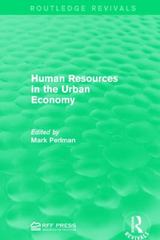Question
Question 1 1. In the mythical nation of Oz, gasoline used to sell for $3.25 a gallon, and the natives purchased 100,000 gallons a week.
Question 1 1. In the mythical nation of Oz, gasoline used to sell for $3.25 a gallon, and the natives purchased 100,000 gallons a week. Four years ago, the price rose to $3.85 a gallon, and the natives reduced their quantity demanded to 80,000 gallons a week. (See "Work it Out" at the end of Section 6.1 in the text for an example.) a. Calculate the price elasticity for this change. Show formula and math! (4 pts.) b. Today, gas again sells for $3.25 a gallon in Oz, but instead of again being willing and able to purchase 100,000 gallons a week, the natives are only willing and able to buy 90,000 gallons a week. Why not 100,000 gallons a week again? What is responsible for this buying change? Explain. (5 pts.) Question 2 2. Suppose that a Starbucks store raises the price of its premium coffee from $2.35 to $2.65 per cup, and as a result, the quantity sold per day decreased from 550 to 470 cups. a. Calculate the price elasticity for this change. Show formula and math? (4 pts.) b. Is this change in price going to successfully increase Starbucks' profits? Explain making references to additional concepts in this chapter. (5 pts.) Question 3 3. If the question is whether a shift in demand will have a greater effect on equilibrium price or quantity, the answer lies not with the elasticity of demand, but with the elasticity of supply. Why is this? Explain fully. You may provide a graph(s) as part of your explanation. (6 pts.) Question 4 4. The supply and demand conditions facing a firm that makes widgets and generates a negative externality by dumping a highly toxic sludge in a nearby river is given in the table below. Price Quantity Demanded Quantity Supplied without Paying Quantity Supplied after Paying Social 100 0 120 75 80 10 100 50 55 30 90 30 40 55 85 25 30 80 80 20 20 100 65 15 a. What is the equilibrium price and quantity when only private costs are taken into account? Explain your thinking. (2 points) b. What is the equilibrium price and quantity when social costs are taken into account? Explain your thinking. (2 points) Question 5 5. Suppose a city releases 16 million gallons of raw sewage into a nearby lake. The table below shows the total costs and marginal costs of cleaning up the sewage to different levels, together with the total benefits of doing so. (Benefits include environmental, recreational, health, and industrial benefits.) Total Cost (in thousands of dollars) Marginal Cost (in thousands of dollars) Total Benefits (in thousands of dollars) Marginal Benefit (in thousands of dollars) 16 million gallons Current situation Current situation 12 million gallons 50 50 800 800 8 million gallons 350 200 1300 200 4 million gallons 500 350 1650 150 0 gallons 1200 700 1900 100 a. What is the optimal level of sewage for this city? Explain making references to economic concepts. (3 points) b. Why not just pass a law that firms can emit zero sewage? After all, the total benefits of zero emissions exceed the total costs. Explain making references to economic concepts. (5 points)
Step by Step Solution
There are 3 Steps involved in it
Step: 1

Get Instant Access to Expert-Tailored Solutions
See step-by-step solutions with expert insights and AI powered tools for academic success
Step: 2

Step: 3

Ace Your Homework with AI
Get the answers you need in no time with our AI-driven, step-by-step assistance
Get Started


